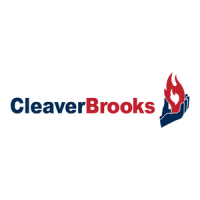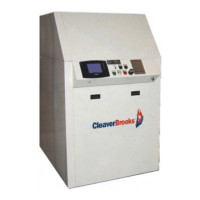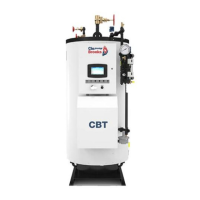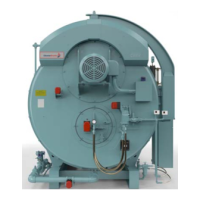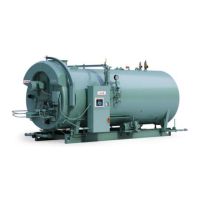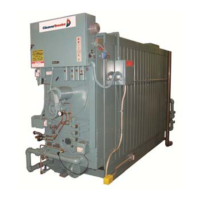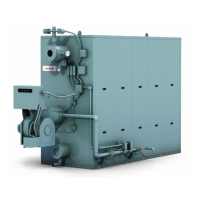CFC-E Installation Manual
2-2 Part No. 750-459
2.1.2 - Flue Venting
The vent should be supported to maintain proper clearances from combustible materials.
Use insulated vent pipe spacers where the vent passes through combustible roofs and walls.
Cleaver-Brooks recommends the use of flue venting systems that are certified to UL 1738 or ULC S636.
Vent material should be appropriate for the Appliance Category. Application-specific information will
further determine the material selected. Flue systems constructed of stainless steel per UL 1738 are
recommended.
In some cases, engineered plastic flue systems (such as polypropylene, PVC, or CPVC) meeting ULC
S636 Type BH specifications may be used. Use of an engineered plastic flue system depends on
operating conditions, specific vent suppliers, and any local codes having jurisdiction. Refer to vent
manufacturer’s specifications for applicability.
When using PVC/CPVC a stack temperature sensor is recommended. For configuration go to Stack
Limit parameters in the Falcon <Configure> menu.
2.1.3 - Vent Terminal Location
Give special attention to the location of the vent termination to avoid possibility of property damage or
personal injury.
• Combustion gases can form a white vapor plume in the winter. The plume could obstruct a window view if the
termination is installed in close proximity to windows.
• Prevailing winds could cause freezing of condensate and water/ice buildup on building, plants or roof.
• The bottom of the vent terminal and the air intake shall be located at least 24 inches above grade, including
normal snow line.
• Un-insulated single-wall metal vent pipe shall not be used outside in cold climates for venting combustion gas.
• Through-the-wall vents for Category II and IV appliances and non-categorized condensing appliances shall not
terminate over public walkways or over an area where condensate or vapor could create a nuisance or hazard or
could be detrimental to the operation of other equipment. Where local experience indicates that condensate is a
problem with Category III appliances, this provision shall also apply.
• Locate and guard vent termination to prevent accidental contact by people and pets.
• DO NOT terminate vent in window well, alcove, stairwell or other recessed area, unless previously approved by
local authority.
• DO NOT terminate above any door, window, or gravity air intake. Condensate can freeze causing ice formations.
• Locate or guard vent to prevent condensate from damaging exterior finishes. Use a 2' x 2' rust resistant sheet
metal backing plate against brick or masonry surfaces.
• DO NOT extend exposed stack pipe outside of building. In winter conditions condensate could freeze and
block stack pipe.
U.S. Installations (refer also to latest edition of the National Fuel Gas Code):
• The vent must not be less than seven (7) feet above grade when located adjacent to public walkways.
• Terminate vent at least three (3) feet above any forced air inlet located within ten (10) feet.
• Vent must terminate at least four (4) feet horizontally, and in no case above or below unless four (4) feet horizontal
distance is maintained, from electric meters, gas meters, regulators, and relief equipment.
• Terminate vent at least six (6) feet away from adjacent walls.
• DO NOT terminate vent closer than five (5) feet below roof overhang.
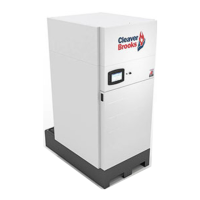
